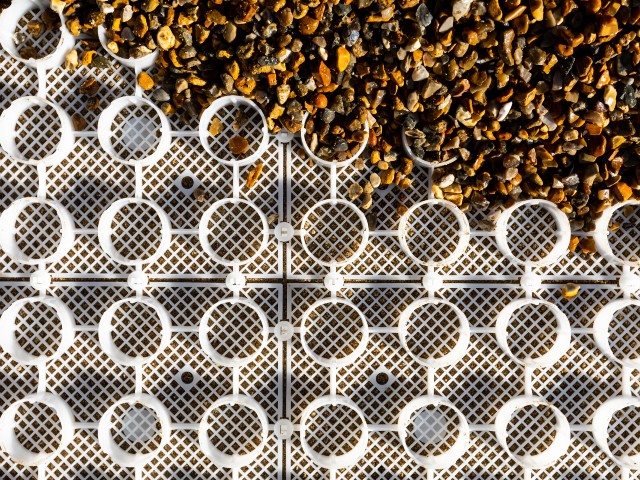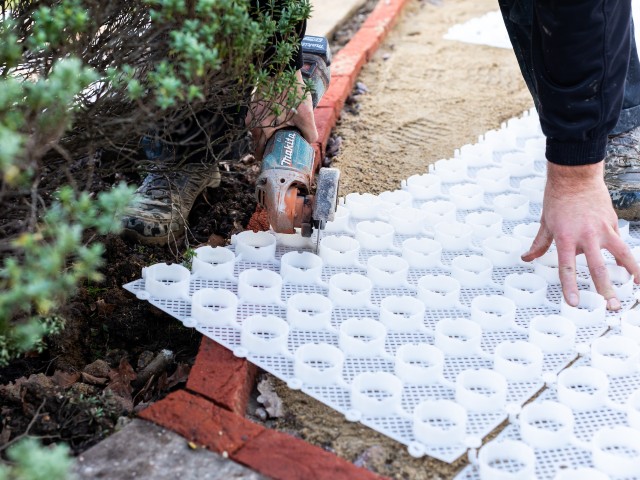How to create the perfect eco-friendly gravel driveway
Gravelrings gravel grids are the ideal solution for eco-friendly landscaping
Striving to make your home more environmentally friendly? Don’t forget to extend green changes to the driveway and your outside space. A classic gravel driveway is one of the most eco-friendly, sustainable driveways to lay – as water can permeate and does not simply run off into the drains, as it can with more hard landscaping surfaces such as concrete, blockwork and tarmac.

You can go one step further, and improve your gravel driveway and green experience, by installing an environmentally friendly eco gravel grid, such as Gravelrings.
A fully permeable gravel retention system, Gravelrings work using interlocking gravel grid tiles of circular cells on a mesh base. The clever design provides gravel stabilisation and prevents the usual pitfalls of using gravel – stone migration, deep ruts, and inconsistent coverage – and can be used in schemes requiring sustainable urban drainage systems (SuDs).

Gravelrings eco gravel grids are available in black and white, with the black made 100% entirely from recycled materials, while the white gravel panels are made from part-recycled material. The black and the white panels of the Gravelrings eco driveway grids are fully recyclable and SuDs compliant.
As well as its eco-friendly credentials, Gravelrings can reduce reflective heat and waterway contamination and is easy to install. The modular design provides hidden strength and stability beneath the surface of the gravel driveway and the mesh base prevents gravel from slipping beneath the tiles. The flexibility of the gravel grid follows the contours of a gravel driveway, preventing silt build-up and discouraging weed growth.
For more information on Gravelrings gravel retention grid system and to find your nearest Gravelrings supplier, click here.











